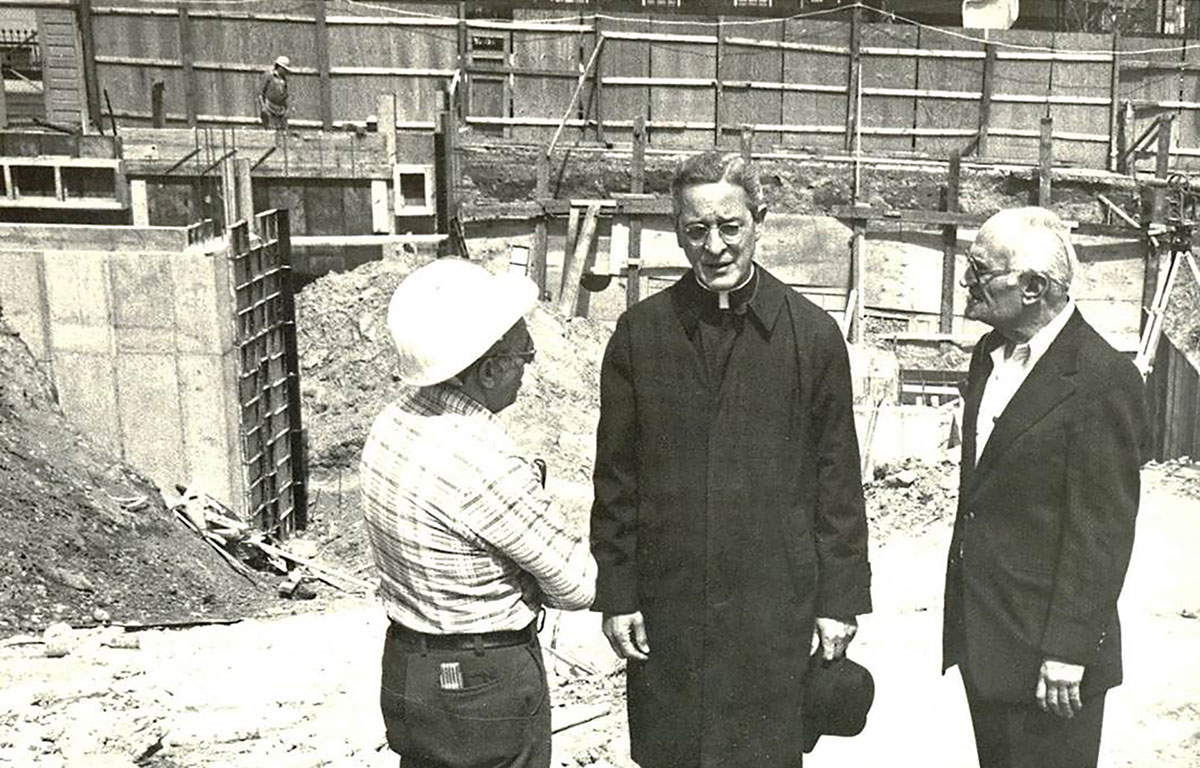About Us- History & Vision

History
It all started in 1975 when parishioners of St. Nicholas Roman Catholic Church responded to help their neighbors after a fire destroyed a row of frame buildings on Powers Street leaving 18 families homeless. St. Nicks Alliance emerged at the forefront of a nationwide grassroots movement to preserve and improve neighborhoods. The mission of our origin remains at the heart of all our work.
Since then, St. Nicks Alliance has led the effort to revitalize and build community in North Brooklyn, scoring major accomplishments in affordable housing, economic development, student success, employment, training and caring for the elderly. These accomplishments have been realized through partnerships, strategic alliances, and collaborations. Further, these achievements would not have taken place without the vision of community leaders, active participation and investment of the business community, hard work of elected officials, the generosity of people like Henry and Louise Von Damm, and faith partners such as Divine Mercy RC Parish and the Diocese of Brooklyn.
In recent years, strategic alliances with School Settlement Association and Conselyea Street Block Association have stabilized, strengthened and expanded a legacy of outstanding service.
Show More
As North Brooklyn stabilized over the past 40 years and the economy grew dramatically beyond anyone’s expectations, economic forces, while bringing improvements to the community, also began to exert enormous pressure on the affordable housing stock, resulting in large scale displacement. In response, St. Nicks Alliance accelerated efforts by renovating, constructing, acquiring and bringing to market over 2,200 units of affordable housing in 334 properties reflecting a total investment of over $250million over 41 years. St. Nicks Alliance join ventured with People’s Firehouse Inc., CABS, Neighborhood Women of Greenpoint/Williamsburg, and Los Sures-Southside United. Brooklyn Legal Services and Communities Resist have strategically litigated to prevent mass eviction at Williamsburg Houses, advance re-development of Greenpoint Hospital and saved the 211 Ainslie Street Center.
As a Civic Anchor and non-profit community developer, St. Nicks Alliance took on greater significance in executing more complex and financially challenging efforts to protect and sustain critical community services undermined by market forces. Today, community and partner organizations seek to preserve and build three important community facilities deemed essential to the delivery of community services.
School Settlement Association needs to rebuild its 110 year old community center at 120 Jackson Street.
Conselyea Street Block Association seeks capital improvements to preserve the Swinging Sixties Senior Center and the Small World Early Child Center while continuing to serve as Greenpoint-Williamsburg’s Town Hall and host Community Board #1 gatherings. T
The Greenpoint Renaissance Enterprise Corporation, a coalition of 11 organizations, secured City approval for the community’s redevelopment of the last remaining city owned parcels on the former Greenpoint Hospital after 40 years of tireless advocacy.
Preservation and development of these critical community assets will be integrated and networked to other community groups forming a larger neighborhood campus. Youth centers will be linked to local schools and health care providers to senior centers and integrated with delivery of health services and senior housing, complementing and supporting each other. All services and strategies rooted in our Theory of Change to transform lives and create opportunities for all. This ambitious goal is pursued with broad support representing a unified neighborhood vision.
St. Nicks Alliance Theory of Change
In 2015, St. Nicks Alliance completed its first Theory of Change, with the support of David Hunter and, later, CRE. Born from this process were NABE 3.0 and our Transformational Practices
In 2021, senior managers began working with a consultant to develop a new Theory of Change to help guide our organization for the next 5–7 years. The new Theory of Change will define a community vision, St. Nicks Alliance Impact Statement, and long/midyear/short term goals focusing in our areas of service.
Vision Statement for our Community
The Community is safe, vibrant and affordable, free of discrimination, inequity and obstacles for a better life. Residents are economically secure, empowered, and able to achieve healthy and fulfilled lives.
Impact Statement
St. Nicks Alliance empowers children, adults and seniors to achieve positive transformational change in their lives. We support low and moderate-income residents including those who might otherwise be marginalized to attain economic security and to lead independent, healthy lives. We do this through sustained and equitable, affordable-housing; employment; youth development, high educational attainment; and care-giving. We create the beneficial experience of a supportive community through advocacy, well-designed spaces, and a vibrant neighborhood for all residents.
Diversity, Equity, and Inclusion
St. Nicks Alliance is dedicated to cultivating a community that embodies the values of diversity, equity, and inclusion. The core foundation of our work rooted in transformational change practices aims to foster a culture where everyone, regardless of their background, is respected, empowered, and provided with equitable opportunities. We strive to create a just and equitable anti-racist community that celebrates diversity, challenges biases, and drives meaningful change within our organizations and beyond.
We are committed to:
- Addressing systemic racism through our transformational work with our staff, community, and volunteers
- Cultivating an inclusive workforce that is representative and mindful of the culturally diverse and racially rich communities in which we serve.
- Pursuing deliberate efforts to ensure inclusivity and belonging where every voice is heard, every perspective is valued, and every individual is treated equitably without regard for race, color, national origin, age, marital status, sex, sexual orientation, gender identity, gender expression, disability, religion, height, weight, or veteran status.
- We recognize the critical role of intersectionality and we are thoughtful about creating an inclusive environment for all to thrive.
We are purposeful in cultivating a safe inclusive environment that empowers all to make meaningful contributions and foster belonging through unequivocal support of all employees, clients, and volunteers.
Through transparent policies, ongoing education, and unwavering commitment to fairness, we are building a culture that fosters collaboration, supports all employees, clients, and volunteers, and reflects the racially diverse communities we serve.
